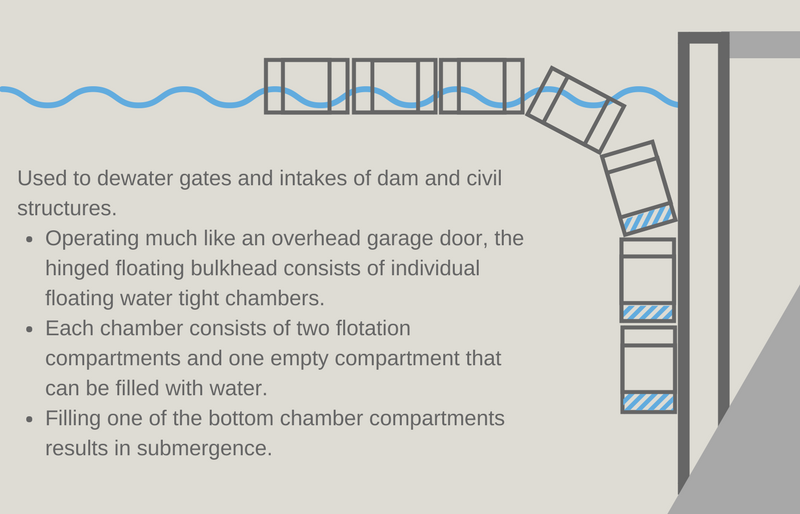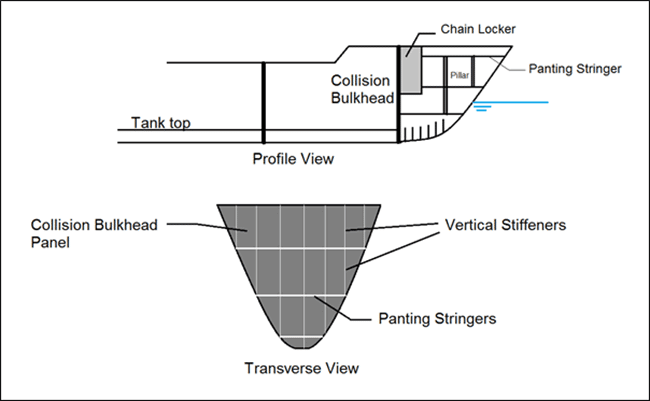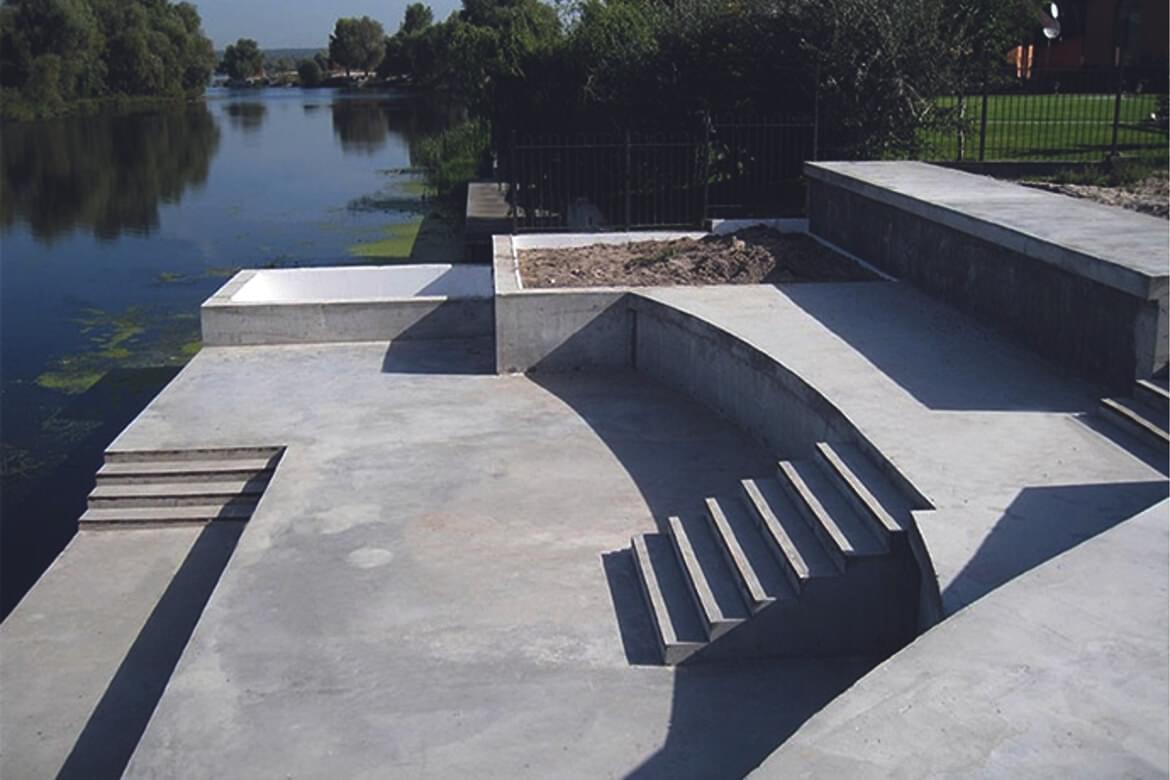Discovering the Different Uses Bulkhead Frameworks in Modern Architecture
Bulkhead frameworks play a significant duty in contemporary design, offering both functional and visual purposes. They can define areas, enhance storage remedies, and improve illumination. In industrial settings, they function as focal factors that mirror brand name identification - Bulkhead on Lake Livingston. Additionally, their integration frequently sustains sound management and sustainable techniques. Recognizing the full scope of their applications discloses much regarding modern layout fads and customer experience. What innovative uses bulkheads might emerge in the future?
Defining Bulkhead Structures
Bulkhead structures play a vital duty in modern architecture, functioning as vital elements in different building layouts. These structures are usually defined as elevated systems or ceilings, often utilized to conceal mechanical systems, wiring, or pipes. Bulkheads can be discovered in both commercial and household setups, where they give a smooth blend of functionality and aesthetic appeals. Their style can incorporate lighting fixtures and other ornamental aspects, enhancing the overall aesthetic charm of an area.
Normally built from materials such as metal, drywall, or timber, bulkheads can be tailored to fit the building style and demands of the structure (Bulkhead on Lake Livingston). They serve not just to hide unpleasant infrastructure yet also to produce defined areas within open spaces. By taking care of the flow of a room, bulkheads contribute to the spatial company, making them a substantial aspect of contemporary building practice. Consequently, their interpretation encapsulates both aesthetic and functional dimensions
Useful Applications in Residential Design
Bulkhead frameworks play a crucial role in household design by promoting area optimization strategies that make the most of functional locations. They add visual design aspects that boost the aesthetic charm of living rooms. Furthermore, these frameworks supply essential architectural support services, making certain the honesty and safety of the home.
Area Optimization Strategies
As contemporary residential designs increasingly prioritize efficient use of area, cutting-edge strategies emerge to make the most of capability without giving up appearances. One popular approach entails the assimilation of bulkhead frameworks, which can mark areas while supplying necessary storage options. These structures can be utilized to create vertical storage space systems that improve both organization and availability. In addition, multi-functional furniture, such as convertible sofas and foldable tables, complements bulkhead styles, allowing areas to adjust to varying demands. Open up layout additionally enhance spatial flow, encouraging versatility in use. Integrating built-in shelving and recessed lighting within bulkheads additionally contributes to a streamlined atmosphere, making sure that every square inch of area is made use of properly and sympathetically within the general design.
Aesthetic Design Components

Structural Support Solutions
In modern-day property style, a reliable architectural assistance service is important for keeping the stability of rooms while enhancing design and capability. Bulkhead frameworks play a substantial role in this circumstance, acting as both support and dividing elements. They can conceal mechanical systems, such as plumbing and electrical wiring, while providing support to the ceiling and flooring systems. By tactically putting bulkheads, engineers can create defined locations within open layout, enhancing use without jeopardizing structural stability. Additionally, these structures can suit lighting components, adding to both appearances and usefulness. To sum up, bulkhead frameworks are indispensable in residential layout, using flexible support services that enhance both the capability and aesthetic appeal of living areas.
Enhancing Appearances in Commercial Rooms
When industrial rooms embrace innovative bulkhead frameworks, they not just specify physical boundaries but additionally considerably enhance the general visual appeals of the environment. These building aspects act as aesthetic centerpieces, drawing focus and developing a sense of intrigue. By integrating varied products such as glass, wood, or metal, bulkheads can show a brand name's identity and goal, adding to a cohesive design.
The tactical positioning of bulkheads can control light and shadow, including depth and measurement to otherwise flat rooms. This interplay can transform an industrial location into an inviting ambience, encouraging customer interaction. Additionally, using shade and structure in bulkhead layout can evoke details feelings, boosting the general client experience. Ultimately, the thoughtful assimilation of bulkhead structures boosts the visual appeal of business spaces, making them not just practical yet additionally visually enchanting, consequently cultivating an enduring impression on site visitors.
Acoustic Efficiency and Sound Administration
Efficient acoustic performance plays an important role in modern-day design, specifically within commercial rooms where audio management is vital. Bulkhead structures can greatly boost acoustic qualities by absorbing audio, reducing echo, and mitigating noise transfer between locations. These functions are especially advantageous in atmospheres such as movie theaters, restaurants, and offices, where clear communication and an enjoyable auditory experience are vital.
The strategic positioning and design of bulkheads can aid produce sound-buffer zones, effectively isolating loud locations from quieter ones. Materials made use of in bulkhead building, such as acoustic panels and soft surfaces, add to their sound-dampening capacities. Additionally, the incorporation of bulkheads enables for the combination of sound-absorbing components without jeopardizing visual charm. By addressing acoustic efficiency, designers can produce harmonious environments that boost convenience, enhance customer experience, and promote productivity, making bulkheads an essential part in the layout of contemporary commercial spaces.
Integrating Bulkheads for Reliable Space Application
Usually forgotten, the combination of bulkheads in architectural design can substantially enhance area usage in modern-day buildings. These structural aspects offer multiple functional objectives, providing a way to conceal mechanical systems, electrical wiring, and plumbing without endangering looks. By tactically positioning bulkheads, engineers can create specified areas within open layout, thereby assisting in far better organization and circulation.
Bulkheads can incorporate storage solutions and illumination attributes, optimizing the functionality of otherwise lost upright room. In domestic settings, they might mark zones such as cooking areas or living locations, while in industrial areas, they can enhance the performance of designs by clearly noting pathways and workplace.
Ultimately, the thoughtful integration of bulkheads Going Here contributes to a much more orderly and visually enticing setting, permitting for versatile areas that can progress with the demands of their owners. This strategy not just optimizes room but likewise promotes a much more unified communication in between type and function.
Bulkheads in Public Style

Architectural Visual Enhancements
While lots of architectural aspects go for performance, bulkheads in public architecture offer a dual function by boosting aesthetic charm. These structures commonly produce visual rate of interest with their layout, integrating flawlessly with surrounding elements. By employing different materials, textures, and shades, bulkheads can add to a special identity for public rooms, such as airport terminals, museums, and libraries. Their calculated positioning helps to define locations, leading site visitors while adding depth to the total design. Additionally, bulkheads can emphasize lights, developing vibrant atmospheres that alter throughout the day. This aesthetic improvement not only boosts the visitor experience but also promotes a sense of location, making bulkheads a vital factor to consider in contemporary public architecture. Generally, bulkheads embody the combination of form and feature.

Structural Assistance Solutions
As architects seek innovative means to enhance the structural integrity of public spaces, bulkheads emerge as vital components in the design and construction process. These frameworks supply important support, particularly in areas based on hefty foot web traffic or dynamic loads. By distributing weight evenly, bulkheads aid protect against structural failure while enabling functional layout alternatives. In large places, such as arenas and convention centers, bulkheads are often integrated right into the total building framework, making sure stability and safety and security. Additionally, they can assist in the incorporation of utilities and mechanical systems, adding to the performance of space use. Ultimately, bulkheads stand for a crucial option in contemporary public architecture, reinforcing both capability and protection in community-focused settings.
Environmental Protection Measures
Incorporating ecological security procedures into public style has ended up being increasingly vital as city designers prioritize sustainability alongside architectural support. Bulkhead frameworks offer a twin function hereof, serving as barriers against disintegration and flooding while concurrently enhancing the visual appeal of metropolitan landscapes. Their layout typically consists of natural components such as plants, which can boost air quality and offer habitats for wildlife. In addition, bulkheads can be crafted with permeable products that enable for water absorption, minimizing overflow and promoting groundwater recharge. This assimilation of eco-friendly considerations not only preserves the setting but also promotes neighborhood strength versus climate modification. By utilizing bulkheads successfully, designers add to lasting urban advancement that lines up with contemporary environmental goals.
Future Patterns in Bulkhead Layout
Arising fads in bulkhead style show a growing emphasis on sustainability, technology, and performance in modern-day style. Developers are progressively incorporating environmentally friendly materials, such as recycled composites and bioplastics, to minimize ecological impact. Furthermore, the assimilation of wise modern technology is coming to be common, making it possible for bulkheads to serve multi-functional resource objectives, including energy storage space and climate control.
In city setups, modular bulkhead systems are gaining traction, offering flexibility in design and convenience of installment. These systems can be adapted to various landscapes, permitting efficient room use. In addition, aesthetic factors to consider are evolving; bulkheads are currently being designed to boost visual appeal, frequently incorporating imaginative elements that resonate with regional culture.
As environment durability becomes a priority, future bulkhead designs will likely focus on flooding defense and stormwater monitoring, ensuring architectural stability while attending to environmental difficulties. This change indicates an alternative method to style that fulfills both eco-friendly responsibilities and human demands.
Frequently Asked Inquiries
What Materials Are Typically Made Use Of for Bulkhead Building?
Common materials for bulkhead construction include concrete, steel, hardwood, and composite materials. These alternatives offer resilience, architectural honesty, and resistance to environmental variables, making them ideal for numerous applications in building and construction and engineering jobs.
How Do Bulkheads Affect Structure Energy Efficiency?
Bulkheads improve building power effectiveness by providing thermal insulation and minimizing air leak (Bulkhead on Lake Livingston). They assist maintain indoor temperature levels, thereby reducing heating and cooling demands, ultimately leading to reduced power expenses and boosted ecological sustainability
Exist Any Building Regulations Details to Bulkhead Structures?
Yes, developing codes details to bulkhead structures exist, varying by place. These policies generally address safety, architectural honesty, and access, making certain that bulkheads fulfill required requirements for building and style within a given jurisdiction.
Can Bulkheads Be Conveniently Customized or Eliminated Later On?
Bulkheads can often be changed or gotten rid of, relying on their style and building. However, such modifications may require cautious preparation and adherence to building regulations to assure structural stability and safety and security are kept throughout the process.
What Are the Expenses Linked With Installing Bulkhead Structures?
The costs related to installing bulkhead structures can vary significantly, commonly influenced by materials, design complexity, and labor. Usually, costs vary from moderate to high, depending on the project's details demands and area.
Bulkhead frameworks play an essential function in modern YOURURL.com design, serving as necessary components in various structure layouts. Bulkhead frameworks play a crucial function in domestic style by helping with space optimization methods that make the most of useful areas. Frequently ignored, the integration of bulkheads in building design can substantially boost area application in modern-day buildings. As engineers look for innovative ways to enhance the structural stability of public spaces, bulkheads arise as important elements in the layout and building and construction procedure. The costs linked with installing bulkhead structures can vary significantly, typically influenced by materials, style complexity, and labor.